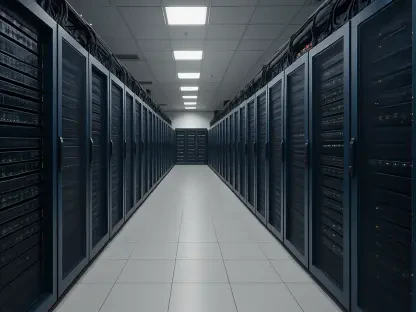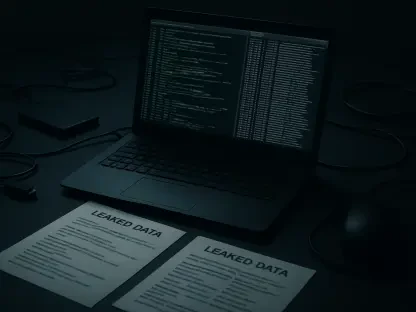The increasing prevalence of ransomware attacks has become a significant concern for cybersecurity experts and businesses alike. This surge in malicious activities is largely attributable to vulnerabilities within Virtual Private Networks (VPNs) and the widespread use of weak passwords. According to Corvus Insurance’s Q3 report, nearly 30% of ransomware attacks can be traced back to these two critical issues. Outdated software and inadequately protected VPN accounts are common entry points exploited by cybercriminals. Simple usernames like “admin” and the absence of multi-factor authentication (MFA) make systems more susceptible to brute-force attacks, further exacerbating the situation.
Current Landscape of Ransomware Attacks
Analysis of Recent Ransomware Activity
In the third quarter of the year, the number of ransomware attacks continued to remain alarmingly high, with a reported 1,257 victims falling prey to these malicious activities. A significant portion of these attacks, about 40%, can be credited to five prominent groups—RansomHub, PLAY, LockBit 3.0, MEOW, and Hunters International. Among these, RansomHub emerged as a particularly notorious player, experiencing a staggering 160% increase in its activities compared to the previous quarter. The overall ransomware landscape has now expanded to include 59 different groups, indicating a burgeoning threat.
Newcomers in the ransomware scene have rapidly proven their capability to cause substantial damage, with groups like RansomHub gaining momentum in the wake of law enforcement’s takedown of LockBit in Q1 2024. This dynamic highlights a troubling trend where as soon as one threat is neutralized, another emerges to take its place, maintaining the constant pressure on security infrastructures. The agility and resilience of these groups in adapting to the ever-evolving cybersecurity defenses underscore the necessity for continuous vigilance and improvement in protective measures.
The Sector-Specific Impact of Ransomware
Ransomware attacks have not targeted all sectors equally, with some industries experiencing more significant impacts than others. The construction industry, for instance, has seen a 7.8% increase in attacks, reaching a total of 83 incidents in Q3. This sector’s reliance on a broad range of technologies and digital tools makes it a particularly attractive target for cybercriminals. Moreover, the disruption caused by such attacks can have far-reaching consequences, delaying projects and escalating costs, which underscores the critical need for enhanced cybersecurity protocols within this industry.
Healthcare has also witnessed a notable rise in ransomware attacks, with the number of victims climbing by 12.8% to 53 in the third quarter. This sector’s sensitivity to data breaches and the critical nature of its operations make it a lucrative target for attackers seeking quick payouts. The potential for life-threatening disruptions and the imperative to protect patient data demand that healthcare organizations adopt robust security measures. Interestingly, IT Services saw a slight decline in ransomware activity, with instances dropping to 49 from 54 in the previous quarter. Nevertheless, due to their systemic risks and the centrality of their services, they remain a primary focus for ransomware groups.
Strategies for Enhanced Cybersecurity
The Importance of Multi-Factor Authentication and Beyond
The pressing nature of the ransomware threat necessitates a multi-layered approach to security that extends beyond the implementation of MFA. While MFA serves as a crucial defense mechanism, it alone cannot address all the vulnerabilities that cybercriminals exploit. Comprehensive access controls are vital in minimizing these risks. These measures include regularly updating software, enforcing strict password policies, and conducting thorough security audits. By limiting access to sensitive information and systems, organizations can reduce the potential attack surface that ransomware groups can target.
Adopting a proactive stance toward cybersecurity, businesses should also invest in advanced threat detection systems that can identify and mitigate potential threats before they escalate into full-blown attacks. Employee training and awareness programs are essential in fostering a culture of security within organizations. Ensuring that staff members understand the importance of following security protocols and recognizing potential phishing attempts can significantly reduce the likelihood of successful ransomware campaigns.
Maintaining Up-to-Date Protective Measures
The rise in ransomware attacks has become a major issue for cybersecurity experts and businesses. This surge in malicious activities is largely due to vulnerabilities in Virtual Private Networks (VPNs) and the rampant use of weak passwords. Corvus Insurance’s Q3 report reveals that almost 30% of ransomware attacks can be traced back to these critical flaws. Cybercriminals often exploit outdated software and poorly protected VPN accounts to gain unauthorized access. Basic usernames like “admin” and the lack of multi-factor authentication (MFA) make systems particularly vulnerable to brute-force attacks, worsening the situation. Moreover, the absence of regular software updates leaves systems open to known exploits, further facilitating cyber intrusions. Businesses and individuals need to be more proactive about their cybersecurity measures by employing stronger passwords, regularly updating software, and implementing MFA. Addressing these weaknesses is essential to mitigate the risk of ransomware attacks and protect sensitive information.









